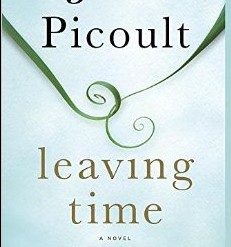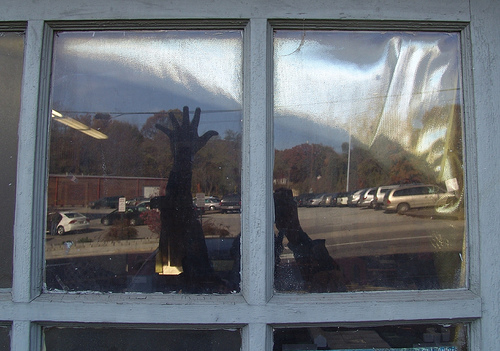Your First 50 Pages—Pass or Fail?
The first fifty pages of your novel carry the heaviest burden for your story. The opening chapters are all about setup. Setup of characters, premise, tone, writing style, conflict, stakes, world/setting, and so much more.
Thousands of writers across the US are finishing a novel today—or at least trying to. For some committed to NaNoWriMo (National Novel Writing Month), this was a first effort. Others have participated many times and have cranked out the semblance of a novel each of those years.
I imagine a lot of writers who signed up didn’t reach the finish line of 50,000 words. I recall how hard it was, writing my first novel thirty years ago. It took me almost a year, and I thought it was a masterpiece.
How wrong I was.
From time to time, I go back and reread it and cringe. Why torture myself? Because it helps me see how far I’ve come in understanding novel structure. And it also helps remind me of how difficult this task is.
If you cranked out a novel (or part of one this month), you may have winged it, with some general ideas sketched out at the start. Maybe a plot idea and a few fun characters. Or you may have done some extensive preparation (I’m hoping you used some of my scene charts and outlines to make the process easier and smooth).
Regardless of how you began, as the Scripture goes: “Finishing is better than starting” (Ecclesiastes 7:8).
Yes, it’s a good feeling—finishing a draft of a novel. But what have you ended up with? Anything worth keeping?
I do dozens of fifty-page critiques every year. I don’t know the exact count, but it’s what I encourage writers to start with when requesting help with their WIP (whether partially done or completed).
Why fifty and not one hundred? Why not twenty pages?
Fifty pages seems to be just the right number to get a feel for all those important elements.
We spent months this year looking at first pages and all that’s needed on those pages. If you missed those posts, do a search for first pages and you’ll find them. My first-page checklist is handy to use, to help you see the needed elements that should be on your first page.
But that’s just the first page.
So let me run down some of the things you need in those opening chapters. And if you’ve been following my blog awhile, this will come as no surprise.
- Setup of a strong, compelling, empathetic protagonist. I’m starting with this one because this must be accomplished quickly. You need your reader to bond with your protagonist in the first page or two (of the first scene he or she is in). Unless you have a terrific prologue to launch your story (meaning, it’s just what your premise and story line need), you should be starting your novel with your protagonist. Of course, there are exceptions to this rule, but if you’re a novice writer, I would highly recommend this course. If you’re not clear on how to create a compelling protagonist, read some of my posts on the topic. Just know, though, this is paramount. Without that compelling protagonist, your novel is going to flop.
- Get the protagonist’s core need, motivation, and life situation clear. You might think this is a no-brainer, but this is severely lacking in a lot of manuscripts I critique. Part of setting up that main character is revealing these key facets about him. Start your story in the middle of something important happening in his life that will reveal his living situation, his immediate problems and concerns, his work and lifestyle, his deepest hopes and dreams and fears. This is all key to story structure and preparation for the inciting incident to come.
- Present the inciting incident. This comes close to the start of your novel. Usually by the 10% mark. But when you are just starting your novel, you don’t know what will end up being 10%. So it’s easier to think in terms of scenes. Get the opening scene or two setting things up so you can slam your character with that incident. Or you might have that disturbance come at the end of the first scene. But I’ll say this, from experience, that it’s tricky to throw that incident in so early. Without proper setup of your protagonist, which means risking the bond and concern for what happens to him, that incident may fall flat. You need to first get your reader to like, care, and understand—to some extent—what he’s about.
- Introduce key supporting characters. These opening chapters need to set up your protagonist’s world populated by character types: family, friends, rivals, love interests, etc. These all need clear roles and should have unique personalities and voices (which includes the narrative voice if they have their own POV scenes).
- Hint at the stakes, and make them high. I wish I didn’t have to pound on this, but I do. Few novels have high stakes, and few present them early on. The more stakes, both personal and public, you can create, the better. But they need to be believable and appropriate. In other words, if you have a boring, weak concept without any kicker, throwing in a ton of danger and conflict that is random and meaningless won’t do anything to hype up the tension in your story. Again, I have gobs of posts and chapters in my writing craft books on conflict, stakes, and tension. Do your homework if you need to learn all this.
- Get that protagonist’s goal in sight! Fifty pages will sometimes get you to that 25% mark in the novel, at which point the hero’s goal for the novel is locked into place. If you’re writing a long novel, by page fifty, your character might not be at that turning point yet, but he should be getting close. All scenes should be propelling your character to that important point. What I see in a lot of novels is a string of scenes, random events and interchanges that don’t seem to have any point to them.
While there is a whole lot more needed in the opening chapters, these are just some key ones that you need to be aware of.
Here’s the thing: if you haven’t written a lot of novels and gotten professional feedback to show you what you’re missing or weak in, you may spend years pumping out drafts of novels and getting nowhere.
Just like many who do NaNo each year. It’s a waste of time unless all you want to do is see if you can whip out 50,000 words.
But I’m hoping that you want to become a great writer and pen terrific books, whether fiction or nonfiction.
Get a Critique!
And so here’s what I suggest. In addition to reading all your can (books, blog posts) and attending conferences and workshops and listening to podcasts, get a critique.
It helps so much to have someone point out to you your strengths and weaknesses. Sure, a critique is subjective, and you may not agree with everything said or recommended. And that’s fine; it’s your story. But I’ve found that writers who submit to a critique and apply what they’re hearing make fast progress in their writing.
All these blog posts and charts and books and online courses I create for you are to help you fast track to success. So you don’t waste years writing stuff that just isn’t working and won’t sell.
So . . . I would like to encourage you to hire me to do a fifty-page critique for you. You will get maybe 100-200 comments and suggestions, covering micro and macro issues. The cost (as it’s been the last few years) is $445 US. But that is only until October 31, 2021, when I’ll be raising my rates. I know editors who charge $250 for a ten-page critique! So this is a real deal.
It doesn’t matter if you’ve written a full draft or only a partial. If you have fifty double-spaced pages, consider this. It may be the best money spent in your writing journey. Because once you see what you need to work on, you can focus on that and ace it. If you don’t, those flaws will be like heavy chains around your neck that you carry everywhere you go.
Take a look at some of the things I cover in my critiques. And BTW this is a great checklist (another one!) that you can download and print out. Use it on your own work or share it with critique partners.
You can submit your first fifty pages and pay HERE.
Treat yourself to this process. Or ask someone to purchase your critique as a holiday gift. I truly believe this is the best next step for you, if you’ve been working on either your first or your tenth novel. I’ll honestly say this: the authors that hire me to critique every one of their novels (before moving on to editing) end up with super strong stories. They’ve learned the value of getting that feedback before getting too far along in the process.
And if you haven’t written those chapters yet but you want help? Put together a scene outline using my template and submit that for a critique.
I hope you had fun participating in NaNo, but the fun doesn’t have to end today. Yes, writing a novel and polishing it up can be a lot of fun if you know what shape that novel is in, what needs to be done to make it shine, and how to make the changes to ensure it will end up a terrific story. You want to get a “pass” on that project, not a “fail”!
And if you’re truly serious about seeing success as a novelist, join my Novel Writing Fast Track group! If you’re not on my mailing list, click HERE to join! You’ll get a free copy of Writing the Heart of Your Story, as well as lots of other free books and special emails to help you fast track to success. Don’t flounder. Succeed!












Wow C.S. this is such a helpful guide. I have written several novels, but I cannot say any are ready for “primetime”. But it is something I want to do so bad, publishing my work, I mean. It seems there is so many wanting to help get you published but it is a bewildering stampeded and hard to decide who is best suited to help. Thanks for your post here.
Thanks, Joe. I think the absolute best thing you could do at this stage is have me critique either your manuscript or a scene outline (the latter is much cheaper and will still reveal a lot about your plot). Study to figure out just which niche genre you are writing in (or trying to) and then dig into best sellers in that genre to learn what readers expect. Taking my Targeting Genre course will help! Seeing publishing success isn’t all that hard if you know how to write great novels and target Amazon for success.
Hi C.S.! I’ve enjoyed reading your blog. I’m currently writing my first novel, and your 10-20-30 scene structure REALLY helped me find concrete direction for my story. Currently, I’m finishing up the last third of my first novel, and it’s been a great learning experience!
I have so many ideas for more stories, and your novel organizer is helping me generate imaginative and fun ideas! I regularly use a hybrid of your “10-20-” scene organizer, but I was wondering if I missed the “30” part of your series? Or is there is a way I can access that information?
Thanks! Glad this is helping you. I actually didn’t go much into the thirty. In the last post in the series, I talked about the need for those key reaction and processing scenes. So while there aren’t any key scenes specific to that “30,” think about filling in between the other established scenes with those moments of reaction and processing. Check out the posts I have on the natural action-reaction cycle. I would aim for coming up with ten key scenes in which your characters’ reactions are crucial to making a new decision. For instance, you might have a midpoint scene in which your protagonist is stunned by an event and now shifts her feelings. The next scene might be her processing this and coming up with a new decision, maybe talking to an ally character about what just happened. Hope that makes sense. From there it’s just a matter of creating the transitional scenes, like spiderwebbing it all together.
You might find it helpful to deconstruct a novel you love in your genre to lay out all the scenes, then see if you can identify the first 10 key ones, then the next 10 subplot or layer scenes, then those key transitional scenes. It can be super enlightening to do so. And if you do create a chart like that, consider sending it to me to share on my blog!
Thanks for your input and advice!! I will work on this, and perhaps I’ll send you my chart! Thank you for your quick response and great support! Cheers!
thanks a lot C.S … it really helped me a lot… I m currently writing my first novel… and get stuck at a few places … and u helped me of course to get ahead!!!
There is so much on the web about how to sell your book and it seem that they don’t care about how good it is. You care and that make you tops on my list. I wrote 50,000 words on NaNoWriMo but the structure was crap because the 50,000 goal became more important than the how. I have published two books with a planned structure and your advice is helping me make the new one even better. It has given me the courage to trash a good part of what I wrote in November. Thank you.
Yay, so glad to hear this, Rachael!